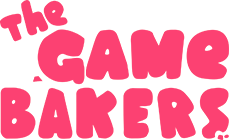Furi Community Week – Interview with Chris, CG Animator
Hello everyone,
The community week is still going on! Today, we are happy to share an interview of Chris Hoareau, Lead Animator & Artist at The Game Bakers. To learn more about his work on Furi, read below!
Hi Chris, can you present yourself and your job on Furi?
Hello! I am Chris and I am a French CG animator and artist, living near Paris. I’m 33. I always drew and wanted to work in entertainment. Fun fact, according to my school teachers, I did my first flipbook at only 4 years old. In animation, I like moves that use the whole body (like fighting, you know). I also like to add unnecessary details, and I’m always the guy who’s late (I am sorry about this, truly). In life, I like speed, having fun, learning things – I actually want to learn everything – and, I’m also the guy who’s late.
For Furi I was in charge of the gameplay animations: that includes the long walk on the path, the fights, and some cutscenes. I also rigged* all the characters. I also storyboarded The Flame’s cutscenes. 2023, it will be my 10-year anniversary at The Game Bakers, so cheers!
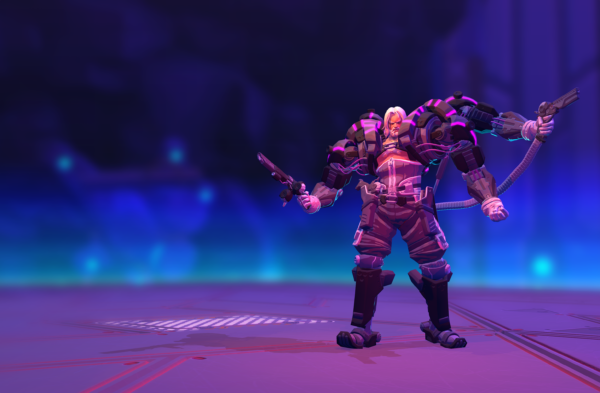
Furi is about creating intense satisfaction to players, as Emeric Thoa, Creative Director, explains in a blog post. How is animation part of creating satisfaction? What were the keys to making Furi’s animation?
There are at least two categories of animations in the game that create satisfaction for players, without talking about cutscenes which make the story go forward.
First, the ones we call “Melee Attacks” (when the boss is stunned, and the player attacks to trigger a short cutscene) are very pleasant to watch. The player can appreciate the nasty blows the bosses have to swallow.
Then, Furi’s gameplay lets players do really quick moves to avoid, parry or attack bosses. Our animations just push up those actions to a next level, that makes them even more satisfactory.
But I want to say it’s really the work of the whole team, animations alone wouldn’t be enough!
Furi is also a game about facing challenge. What was the biggest challenge regarding animation on Furi?
The biggest challenge was to make fighting animations that were fast but also readable to the human eye. It was my intention, but it was pretty hard to do, especially as I was a junior back then. I had not that much experience in animation. Some of the fighting animation length was something like 2 frames (Furi was animated at 30 frames per second, so that is pretty short in time). I hope players managed to see all the nice details we added!
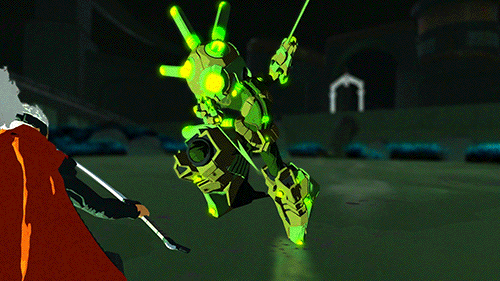
Can you share some references you used to animate some of Furi’s bosses?
For sure!
First, Takashi Okazaki (character designer of Furi) drew some cool and original posings for Rider. I’m thinking about Rider’s running stance: holding his sword in two hands right in front of him while running at something like 50mph, haha.
I love and grew up with Japanese culture, mostly anime (precisely “shonen neketsu” like Dragon Ball, Saint Seiya, Hokuto No Ken, etc…) so I am imbued with these brutal accelerations, inhuman movements and iconic posings.
I also practiced martial arts for a few years, so I recorded myself with my smartphone smashing pillows in the living room of my previous apartment to reproduce and adjust my moves in the game. (Don’t ask, I will not share those videos).
Emeric, who has a big movie culture, shared some movie scenes that help me a lot, for instance from the Miyamoto Musashi movies. He shared ideas coming from fighting games like Soul Calibur or Metal Gear. He already had an excellent vision of the game before its conception.
Finally, I can tell that there was also a big part of “feeling”. I mean, the characters’ designs have strong personalities. Just looking at Takashi Okazaki’s artworks was often enough to know how to animate and give life to each boss.
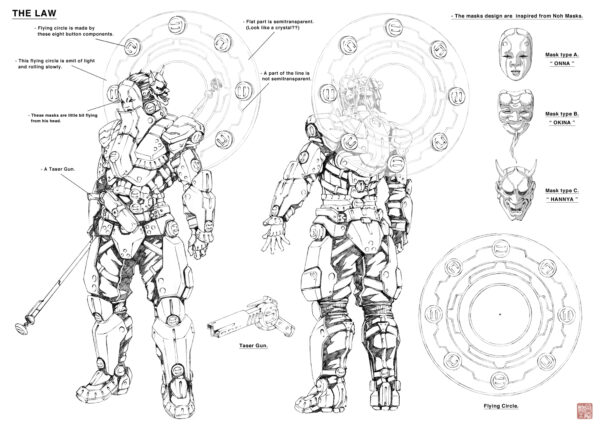
What did you enjoy the most while working on the game?
To be honest, as an animator, Furi was the first game I worked on for PC and consoles. Just wow ! Secondly, this is a fighting game! I’m keen on fighting games. As I said before, I practiced martial arts and I really love them. It was just like a dream come true to animate all those incredible fighters! Thirdly, there was a big creation part. I was and felt really free to create some fighting moves. Every time I worked on a new boss, it was like entering a new world, with new feelings. It was enriching to try to imagine the mindset of each boss.
How did you proceed to animate Onnamusha, the new rider? What did you have to do to make her move as the rider?
I can’t reveal all the magic tricks, right?
Actually, Onnamusha uses almost all the same animations as Rider. The reason was that Onnamusha had to play correctly the existing cutscenes as the new Rider. To do this, I had to set up the 3D model (made by the awesome CG artist Anthony Beyer) so she had more or less the same body proportions to share the same rigged skeleton as Rider. In addition, Onnamusha had to keep her female shape, and that was the tricky thing: to have a female body share the skeleton of Rider. The more the two characters had the same proportions, the more the game and cutscenes animations fit.
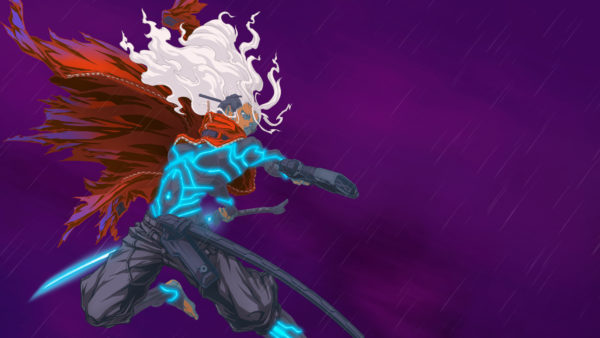
Was there anything unexpected that happened during the development?
Developing a game IS a source of unexpected things! There is always something new to learn and something new to fix.
One thing that wasn’t really planned and gave me some trouble was that I had to animate (by hand) Rider’s hair and cape. For the first iterations of Furi, these parts relied on the physics of the game, and it was very beautiful. Then came the optimization pass (it was obviously very important to have a good frame rate to be able to play properly) and we had to make compromises.
Fortunately, I had already done that before on The Burst hat bands. It was already planned to animate the ribbons “by hand”, so I knew how to do it. At that time, we already knew that it would require too much resource to have her bands animated by the game physics, so, it was not an option. Everything was planned in the rig* and the animations of The Burst, and baked into her animations files.
So, I had to adapt Rider’s rig by adding bones to his hair and to his cape. To have something like a natural rendering, I simulated the physics of the hair and the cape and I created the animations one by one. I added wind effects and played with gravity when it was necessary. For example, when Rider runs, his hair and his cape had to go backwards. It meant I had to re-animate, re-export, and reintegrate the animations of Rider with the hair and the cape animations in the files. It was a lot of work!
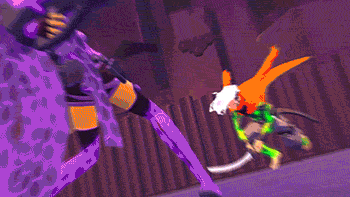
Do you have any last word for Furi’s players?
For players: if you haven’t finished the game, please do!
For animators: don’t hesitate to do weird new things that can lead to great ones!
For me (how snooty): don’t forget to enjoy life!
* Like for a puppet, rigging is the creating the elements necessary to animate a character. First, we create a skeleton which will more or less influence the body parts that we want to move. Then, to animate it more easliy, we create “controllers” of the skeleton, which allow the bones to be moved as desired. A rig = skeleton + controllers on the CG model of the character.

